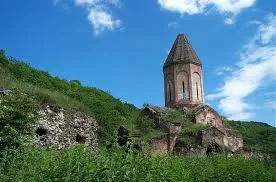(asianews. Vladimir Rozanskij).
– La Chiesa Apostolica Armena ha assunto ormai una posizione politica esplicita di confronto con il governo di Erevan, con il rischio di una radicalizzazione sempre più violenta delle proteste di piazza, guidate dall’arcivescovo di Tavowš, Bagrat Galstanyan, che continua a ripetere che “non lasceremo le strade fino alla vittoria”, cioè fino alle dimissioni del primo ministro Nikol Pašinyan.
Galstanyan non si limita ad arringare le folle, ma le spinge all’assalto dei palazzi del potere, com’è successo nei giorni scorsi, cercando di rinchiudere il premier e i deputati in quello dell’Assemblea nazionale per costringerli poi a presentarsi davanti al “tribunale popolare” da lui stesso presieduto. La polizia ha cominciato a usare le maniere forti per disperdere i dimostranti, anche se finora l’arcivescovo rivoluzionario non è stato toccato. Pašinyan e i sostenitori della maggioranza di governo stanno però utilizzando argomenti sempre più infuocati contro gli oppositori ecclesiastici.






